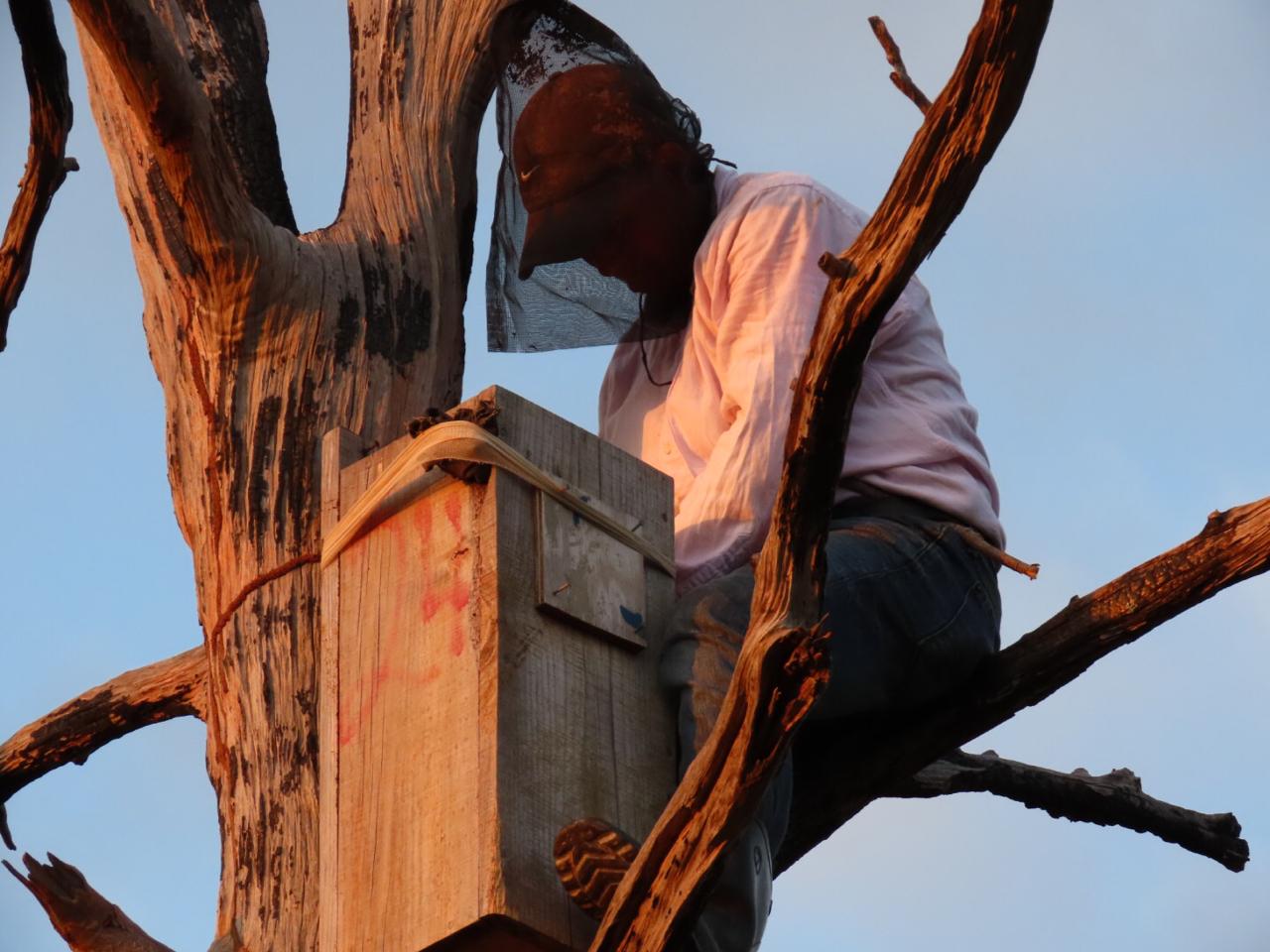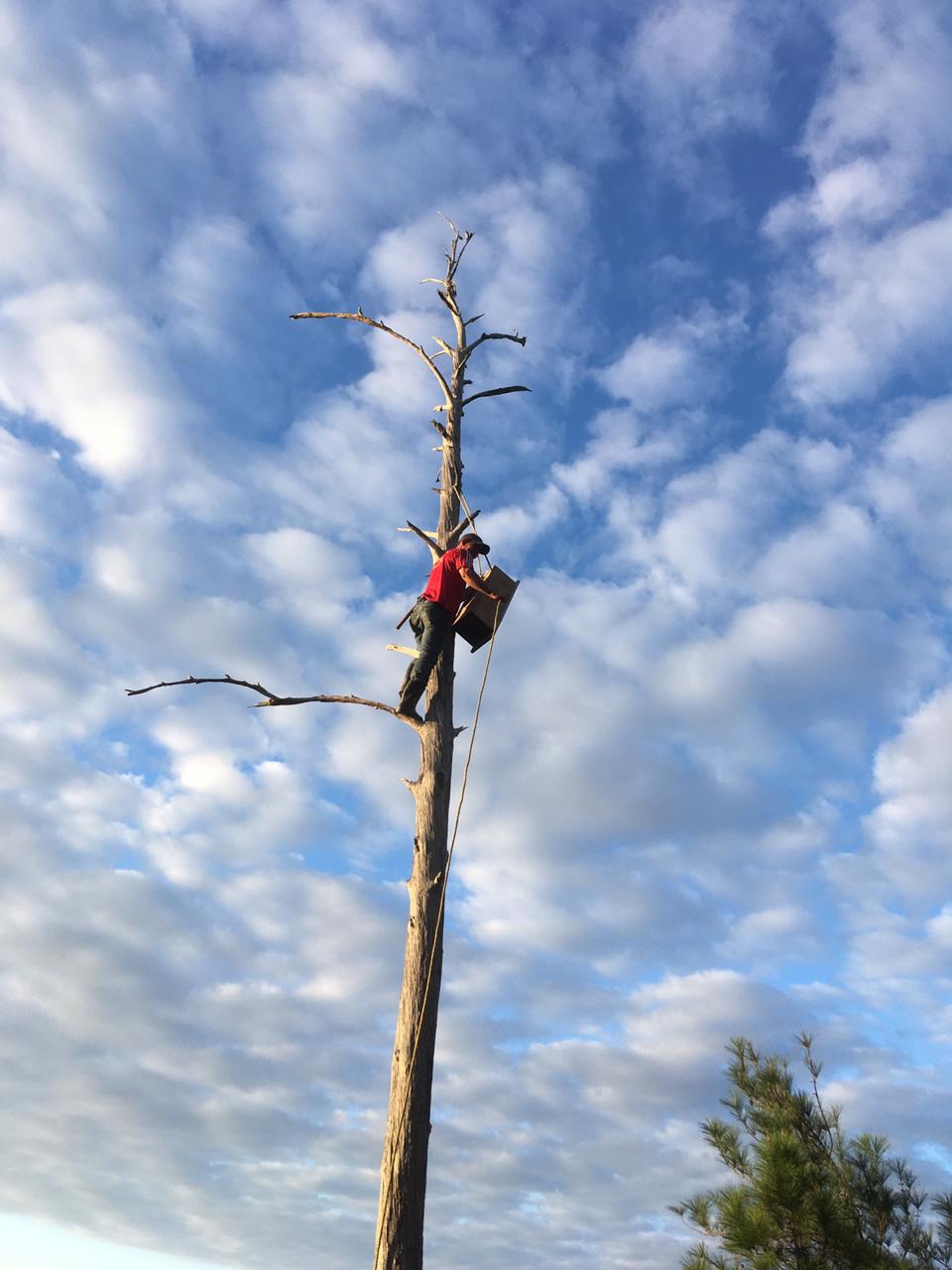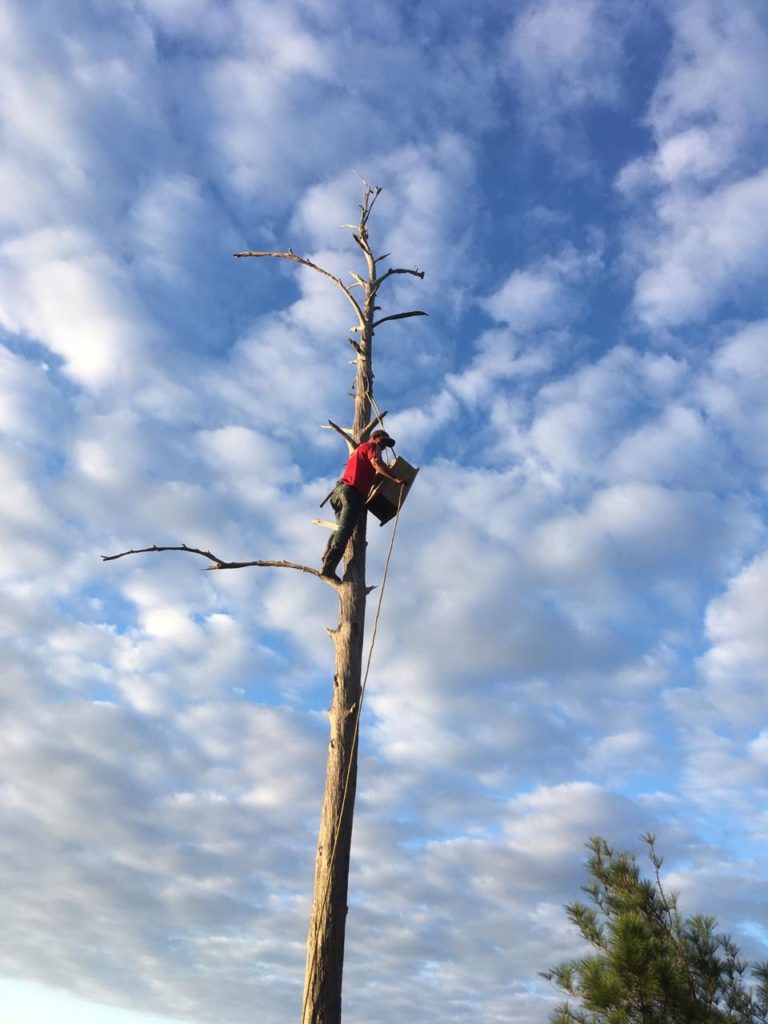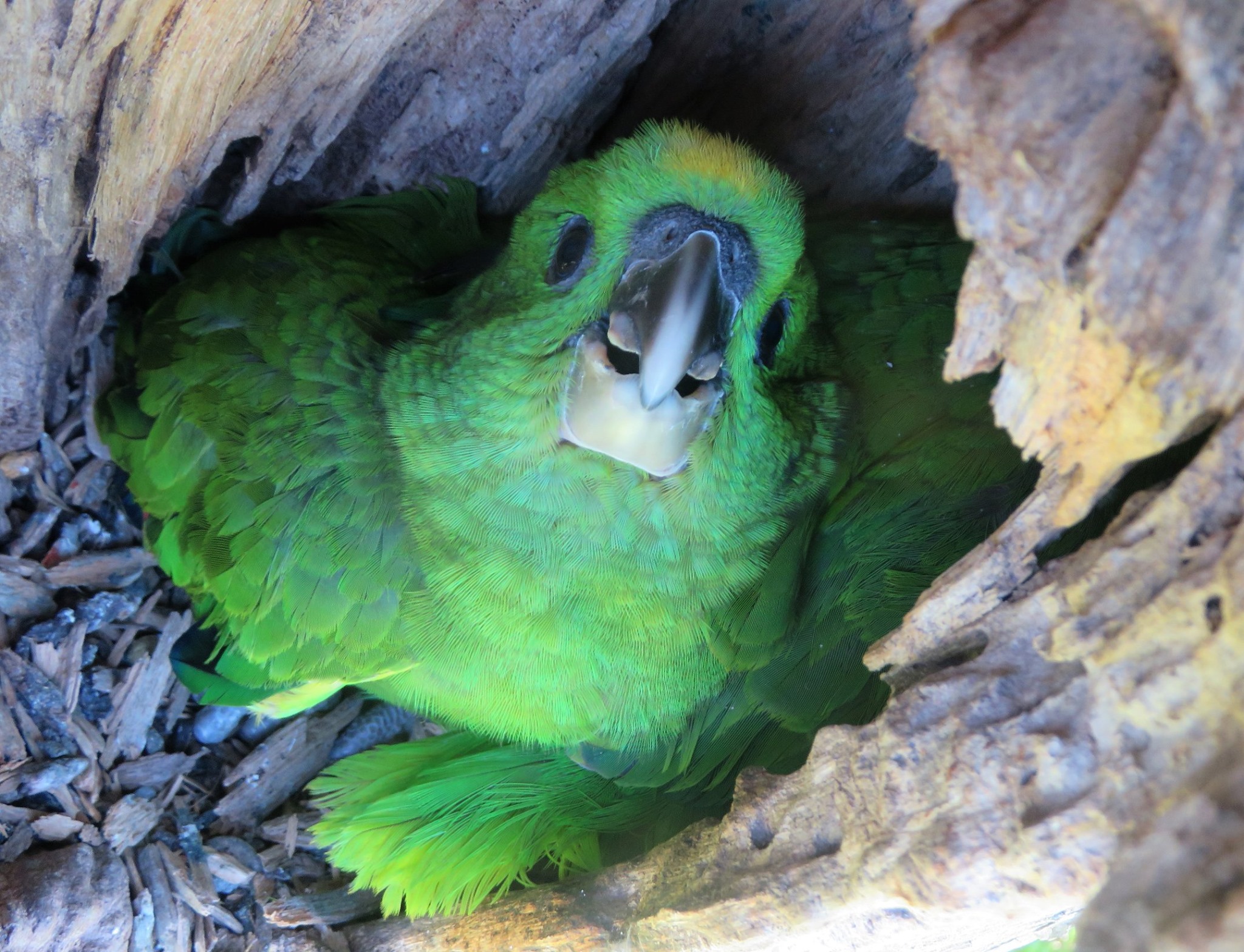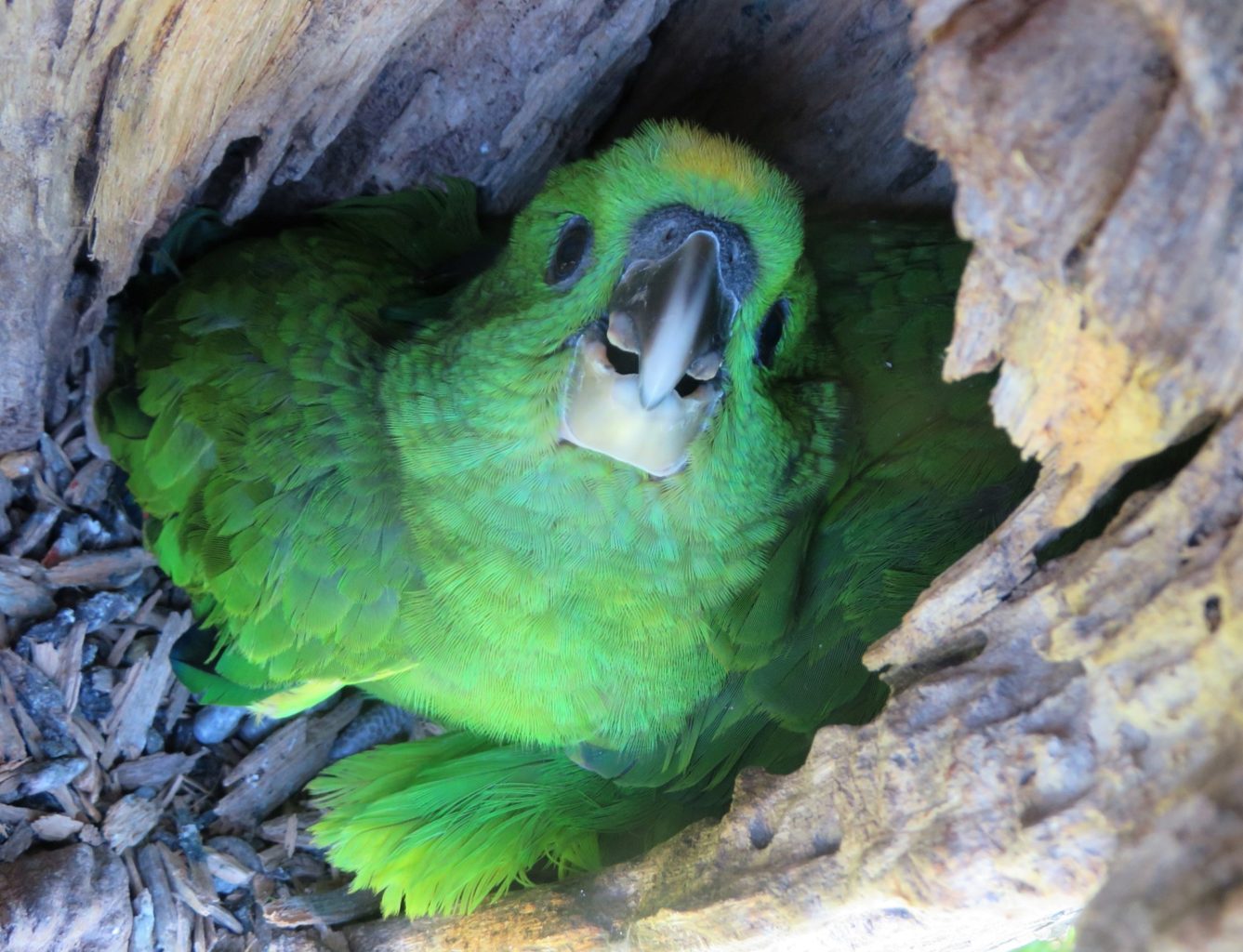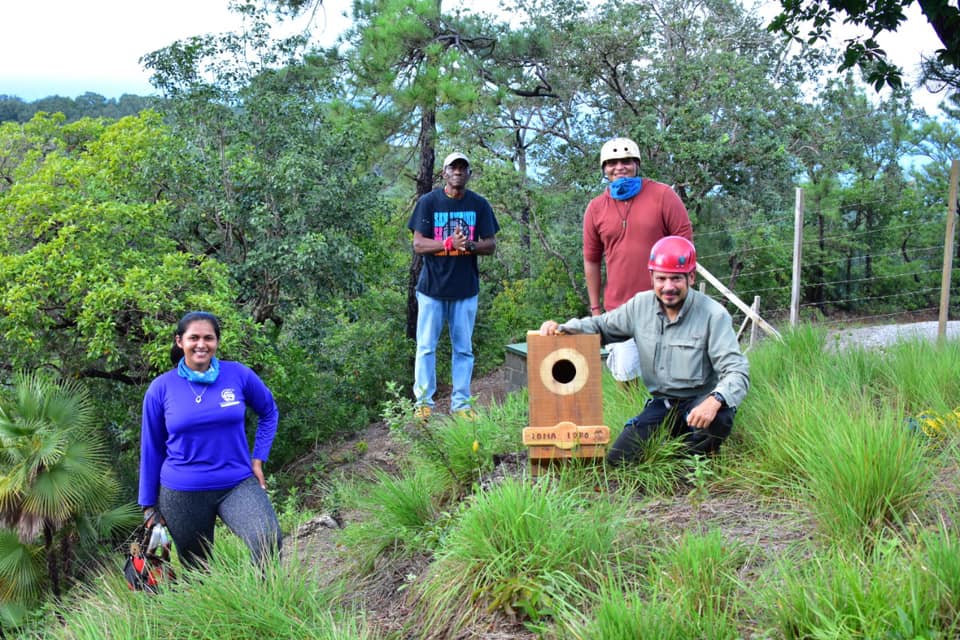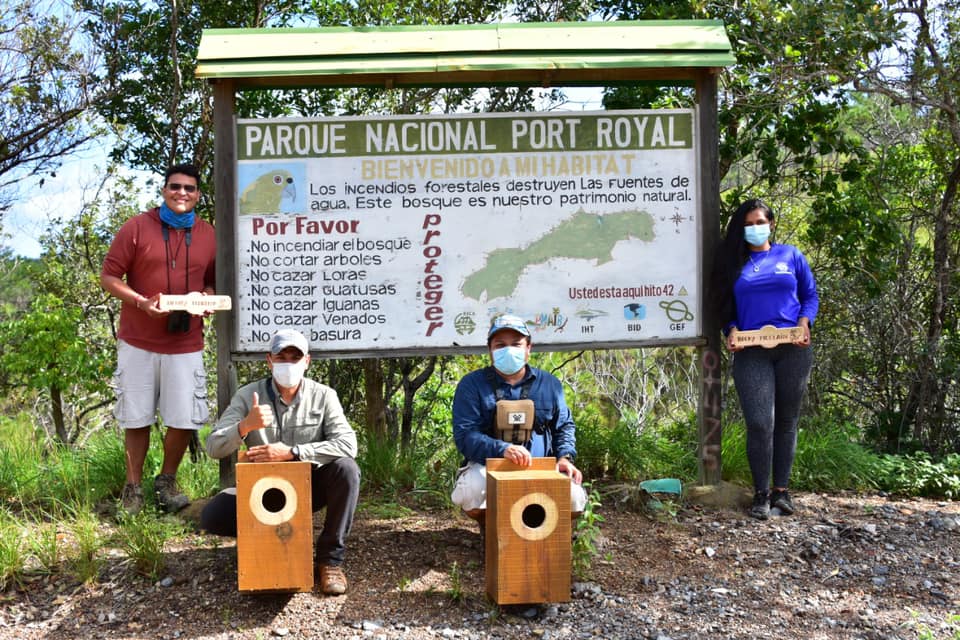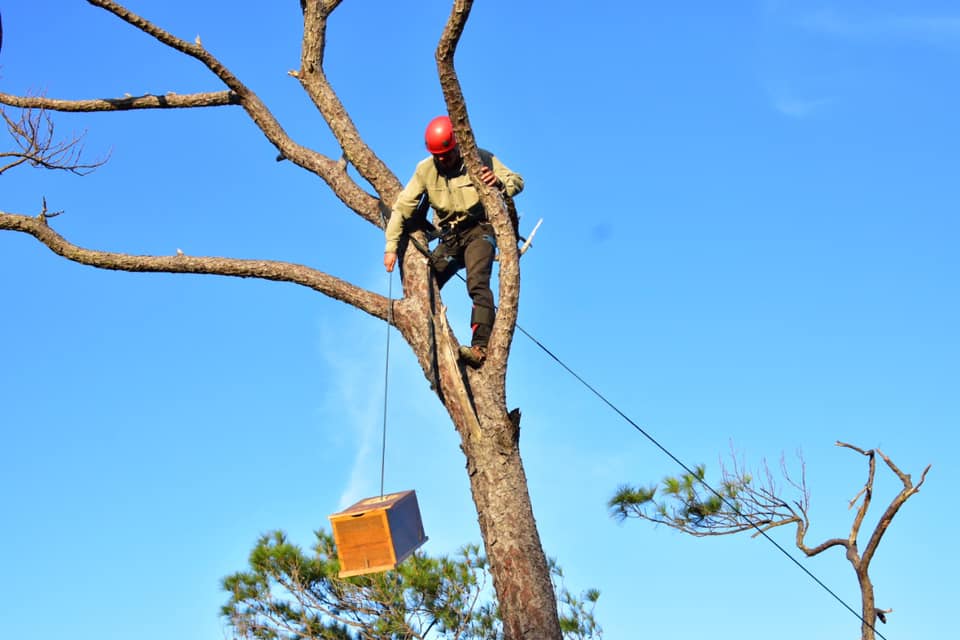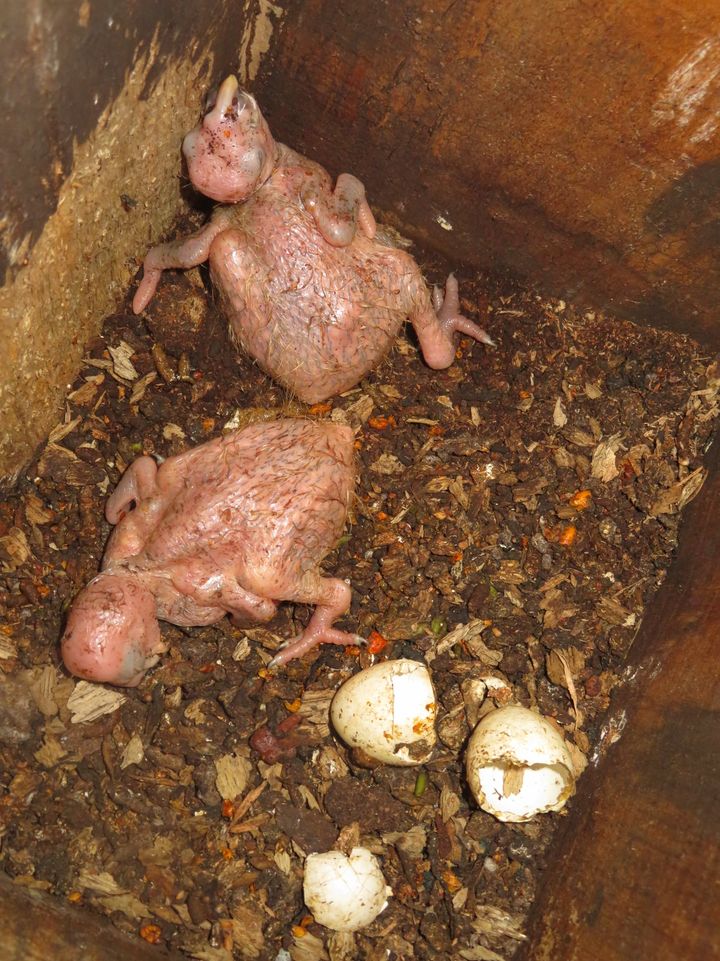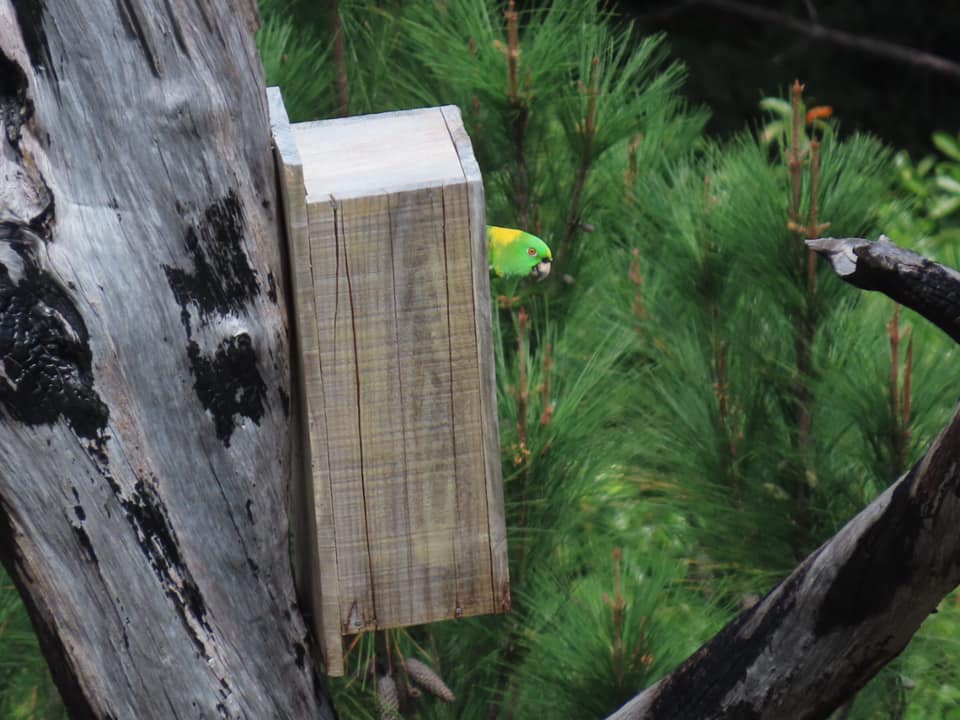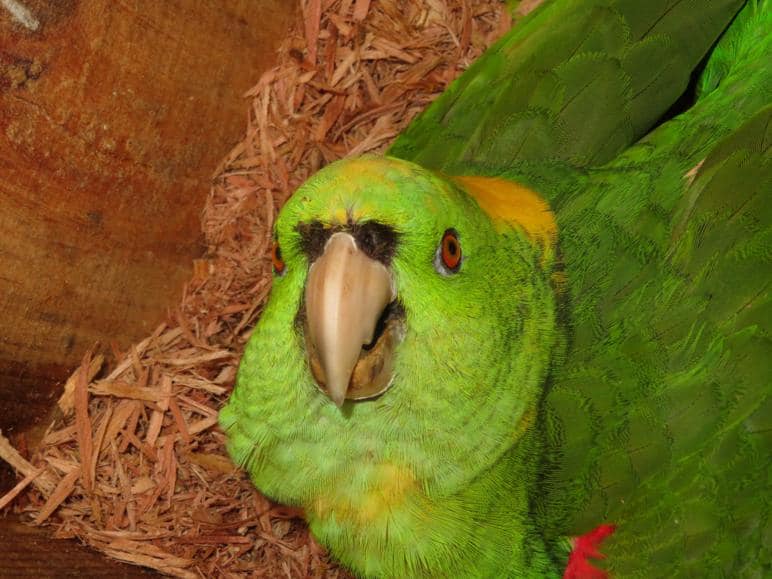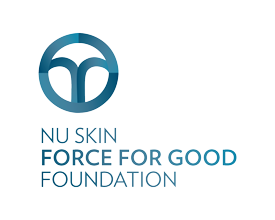This project is harnessing the energy of a home-grown birding boom among Honduran youth to save native parrots, whose populations are perilously low. It offers environmental education and skills training to youth while also protecting the parrots.
Habitat degradation and poaching for the pet trade have severely damaged the Bay Islands’ native, nonmigratory parrots. A 2020 count found only 38 yellow-naped parrots and eight yellow-lored parrots on Roatán. These populations are so low that a single tropical storm could wipe them out.
To increase parrot populations, our partner will put up nest boxes and keep an eye on nests during the breeding season. Installers use professional climbing gear to put the nest boxes high in the trees, so that poachers can’t reach them. Natural nests are protected with daily patrols from January through May. Patrols are necessary only during the nesting season because wildlife traffickers want hatchlings—birds that are young enough to be trained to speak to increase their price as pets. This approach has already been effective on Guanaja Island, where parrot numbers more than doubled in less than two years.
This project invites teens and young adults to join a club through the Bay Islands Conservation Association, the organization cofounded by Seacology Prize recipient Irma Brady. Many island young people recently became interested in birds; young birders have been hosting workshops, gathering baseline population data, and logging their data into apps. With binoculars and field guides, they go out in small groups to see parrots and other wildlife, leaning about island ecosystems, and threats to wildlife. They conduct annual population counts, which are key to knowing how well conservation efforts are working. They get not only environmental education, but also a professional skillset, opening up opportunities for work in wildlife-based tourism. Our partners will concentrate their outreach in communities that have not benefited from the tourism boom.


